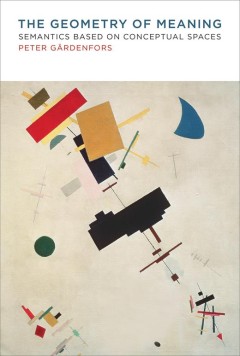Filter by

Semantics and syntax in lexical functional grammar :the resource logic approach
"A Bradford book."OCLC-licensed vendor bibliographic record.
- Edition
- -
- ISBN/ISSN
- 9780262271172
- Collation
- 1 online resource (x, 399 pages).
- Series Title
- -
- Call Number
- -

Semantic cognition :a parallel distributed processing approach
This groundbreaking monograph offers a mechanistic theory of the representation and use of semantic knowledge, integrating the strengths and overcoming many of the weaknesses of hierarchical, categorization-based approaches, similarity-based approaches, and the approach often called "theory theory." Building on earlier models by Geoffrey Hinton in the 1980s and David Rumelhart in the early 1990…
- Edition
- -
- ISBN/ISSN
- 9780262282505
- Collation
- 1 online resource (xiv, 425 pages) :illustrations
- Series Title
- -
- Call Number
- -

Restriction and saturation
With this study of Maori and Chamorro, Sandra Chung and William Ladusaw make a valuable contribution to the growing literature on the formal semantic analysis of non-Indo-European languages. Their ultimate focus is on how the study of these Austronesian languages can illuminate the alternatives for semantic interpretation and their interaction with syntactic structure. Revisiting the analysis o…
- Edition
- -
- ISBN/ISSN
- 9780262270274
- Collation
- 1 online resource (xiv, 173 pages) :illustrations.
- Series Title
- -
- Call Number
- -

Spinning the semantic Web :bringing the World Wide Web to its full potential
As the World Wide Web continues to expand, it becomes increasingly difficult for users to obtain information efficiently. Because most search engines read format languages such as HTML or SGML, search results reflect formatting tags more than actual page content, which is expressed in natural language. Spinning the Semantic Web describes an exciting new type of hierarchy and standardization tha…
- Edition
- -
- ISBN/ISSN
- 9780262256131
- Collation
- 1 online resource (xxiii, 479 pages) :illustrations
- Series Title
- -
- Call Number
- -

Words without meaning
"A Bradford book."According to the received view of linguistic communication, the primary function of language is to enable speakers to reveal the propositional contents of their thoughts to hearers. Speakers are able to do this because they share with their hearers an understanding of the meanings of words. Christopher Gauker rejects this conception of language, arguing that it rests on an unt…
- Edition
- -
- ISBN/ISSN
- 9780262273596
- Collation
- 1 online resource (xi, 299 pages).
- Series Title
- -
- Call Number
- -

Type-Logical Syntax
A novel logic-based framework for representing the syntax–semantics interface of natural language, applicable to a range of phenomena. In this book, Yusuke Kubota and Robert Levine propose a type-logical version of categorial grammar as a viable alternative model of natural language syntax and semantics. They show that this novel logic-based framework is applicable to a range of phenomena�…
- Edition
- Ed. 1
- ISBN/ISSN
- 9780262360807
- Collation
- -
- Series Title
- -
- Call Number
- 412 KUB t

Quotations as Pictures
The proposal of a semantics for quotations using explanatory notions drawn from philosophical theories of pictures. In Quotations as Pictures, Josef Stern develops a semantics for quotations using explanatory notions drawn from philosophical theories of pictures. He offers the first sustained analysis of the practice of quotation proper, as opposed to mentioning. Unlike other accounts that t…
- Edition
- Ed. 1
- ISBN/ISSN
- 9780262367356
- Collation
- -
- Series Title
- -
- Call Number
- 412 STE q

Verb Sense Discovery in Mandarin Chinese—A Corpus based Knowledge-Intensive…
This book applies linguistic analysis to the poetry of Emeritus Professor Edwin Thumboo, a Singaporean poet and leading figure in Commonwealth literature. The work explores how the poet combines grammar and metaphor to create meaning, making the reader aware of the linguistic resources developed by Thumboo as the basis for his unique technique. The author approaches the poems from a function…
- Edition
- -
- ISBN/ISSN
- 978-3-662-44556-3
- Collation
- -
- Series Title
- -
- Call Number
- -

The Geometry of Meaning: Semantics Based on Conceptual Spaces
A novel cognitive theory of semantics that proposes that the meanings of words can be described in terms of geometric structures. In The Geometry of Meaning, Peter Gärdenfors proposes a theory of semantics that bridges cognitive science and linguistics and shows how theories of cognitive processes, in particular concept formation, can be exploited in a general semantic model. He argues that…
- Edition
- -
- ISBN/ISSN
- 9780262319584
- Collation
- -
- Series Title
- -
- Call Number
- 400 GAR t

Culinary Linguistics: The Chef's Special
Language and food are universal to humankind. Language accomplishes more than a pure exchange of information, and food caters for more than mere subsistence. Both represent crucial sites for socialization, identity construction, and the everyday fabrication and perception of the world as a meaningful, orderly place. This volume contains an introduction to the study of food and an extensive over…
- Edition
- -
- ISBN/ISSN
- 9789027202932
- Collation
- -
- Series Title
- -
- Call Number
- -
 Computer Science, Information & General Works
Computer Science, Information & General Works  Philosophy & Psychology
Philosophy & Psychology  Religion
Religion  Social Sciences
Social Sciences  Language
Language  Pure Science
Pure Science  Applied Sciences
Applied Sciences  Art & Recreation
Art & Recreation  Literature
Literature  History & Geography
History & Geography